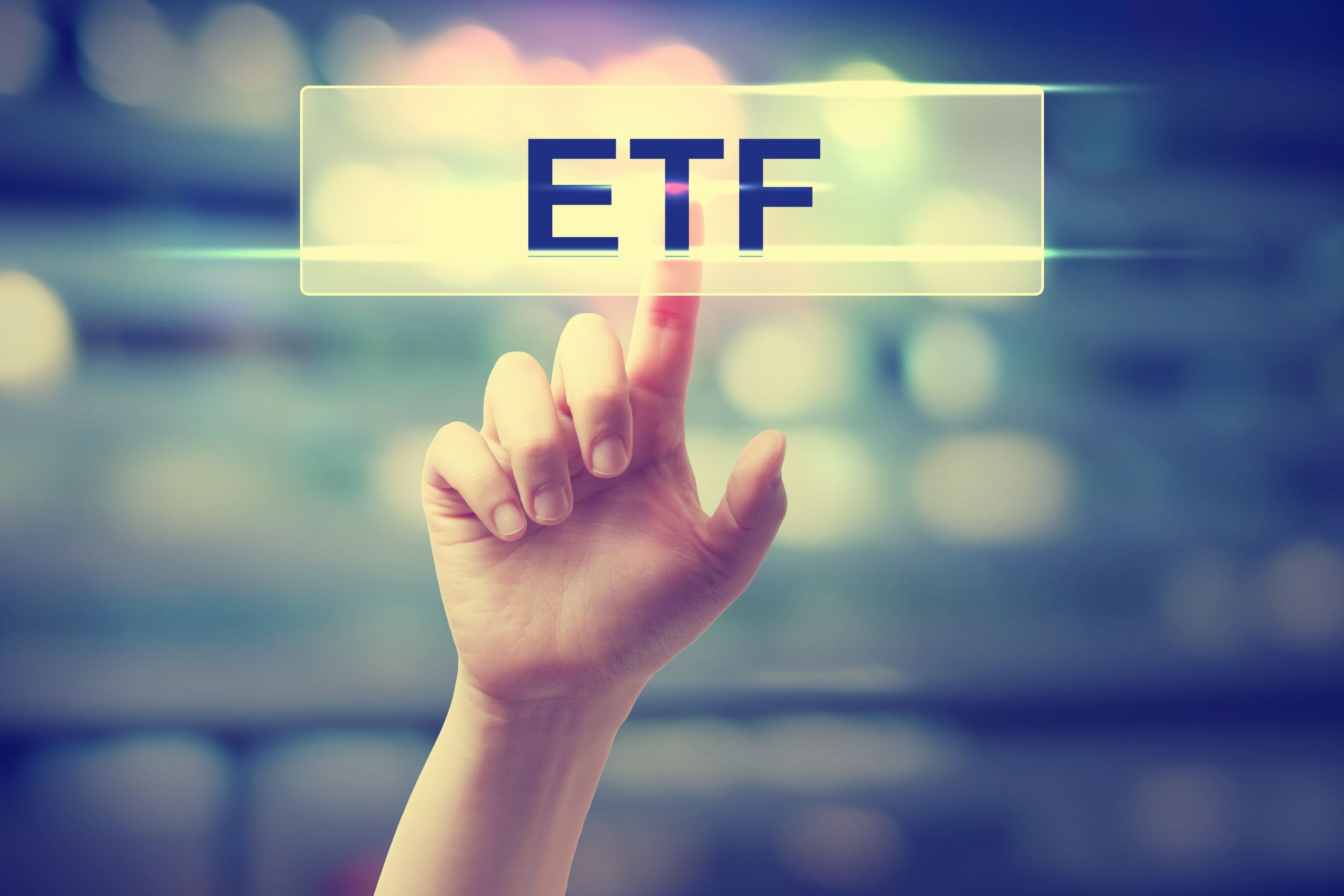Exchange Traded Funds (ETFs) are becoming increasingly popular in the investment world. In this article, we will focus on explaining what ETFs are, how they work, and their benefits. ETFs are investment funds that trade on stock exchanges, just like individual stocks. They are similar to mutual funds, but with some key differences. ETFs are designed to track the performance of a specific index, sector, commodity, or asset class. They offer investors a way to diversify their portfolios and gain exposure to a wide range of securities. ETFs can be bought or sold throughout the trading day, providing investors with flexibility and liquidity. Additionally, they often have lower expense ratios compared to mutual funds and provide tax advantages. ETFs have gained popularity in recent years due to their transparency, cost-effectiveness, and ease of use.
In this article, we will delve deeper into the mechanics of ETFs, their advantages, and how they can be utilized in an investment strategy.
What Are ETFs
An Exchange-Traded Fund (ETF) is an investment fund that is traded on a stock exchange, similar to a stock. It is designed to track the performance of a specific index, such as a stock index or bond index. ETFs are structured as open-end funds, meaning that investors can buy and sell shares of the fund throughout the trading day.
ETFs share similarities with mutual funds in that they pool money from multiple investors to invest in a diversified portfolio. However, ETFs differ from mutual funds in the way they are traded. While mutual funds are bought and sold at the end of the trading day at the net asset value (NAV), ETFs can be bought and sold throughout the day at market prices.
There are various types of ETFs available to investors. Equity ETFs track specific stock indexes, providing exposure to a broad range of companies within a particular market. Bond ETFs track bond indexes, enabling investors to gain exposure to fixed-income securities. Commodity ETFs track the prices of commodities like gold, oil, or agricultural products. Sector ETFs invest in specific sectors of the economy, such as technology or healthcare. Lastly, international ETFs provide exposure to foreign markets and companies.
How Do ETFs Work
ETFs, or Exchange Traded Funds, are investment funds that are traded on exchanges, similar to stocks. They provide individual or institutional investors with exposure to a diversified portfolio of assets, such as stocks, bonds, or commodities. The creation and redemption process of ETFs is an essential aspect of their functioning.
To create new ETF shares, an authorized participant, typically a large financial institution, assembles the underlying securities in the designated proportion and delivers them to the ETF issuer in exchange for ETF shares. This creation process ensures that the ETF’s share price remains closely aligned with the value of its underlying assets. Conversely, when investors want to redeem their shares, they return them to the issuer in exchange for the underlying securities.
ETFs can be bought and sold throughout the trading day on stock exchanges. Investors can place orders to buy or sell ETF shares at market prices or at a specified limit price. The trading of ETFs is facilitated by market makers, who continuously quote bid and ask prices for the ETF shares. These market makers, along with liquidity providers, play a crucial role in ensuring there is sufficient liquidity in ETF trading. They maintain an active secondary market for ETF shares, enabling investors to easily buy or sell them at fair prices.
Benefits of Investing in ETFs
Exchange traded funds (ETFs) offer several key advantages to investors. One advantage is diversification, as ETFs typically hold a basket of securities, such as stocks or bonds, providing exposure to a range of assets. This diversification reduces the risk associated with investing in a single security.
Another advantage is liquidity, as ETFs trade on an exchange throughout the trading day, allowing investors to buy or sell shares at market prices. This liquidity ensures that investors can readily enter or exit their positions, providing flexibility and efficiency.
ETFs also offer cost-efficiency, as they generally have lower expense ratios compared to mutual funds. This is due to their passive management style, which seeks to replicate the performance of a specific index rather than actively selecting securities. As a result, ETFs can offer investors cost savings in the form of lower fees.
From a tax perspective, ETFs offer tax efficiency benefits due to the in-kind creation/redemption process. This process allows ETF shares to be created or redeemed by authorized participants in exchange for a basket of securities, which helps to minimize capital gains distributions to shareholders.
When comparing ETFs to mutual funds, ETFs have unique advantages such as intraday trading, increased transparency, and potential tax savings. These benefits make ETFs an attractive investment option for both individual and institutional investors seeking diversification, liquidity, cost-efficiency, and tax efficiency.
Risks and Considerations
Exchange-traded funds (ETFs) carry potential risks that investors should be aware of. One important risk is market risk, which poses a threat to the overall performance of the ETF. As ETFs track the performance of an underlying index or asset, their value is subject to market fluctuations and volatility. If the market experiences a downturn, the value of the ETF can decline.
Another risk to consider is tracking error. Although ETFs aim to replicate the performance of their underlying assets, tracking error can occur due to various factors such as fees, expenses, and market conditions. Tracking error refers to the deviation of an ETF’s performance from its underlying index. Higher tracking error can impact the ETF’s returns and result in discrepancies between the expected performance and the actual performance.
Understanding the underlying assets and the investment strategy of an ETF is crucial. Different ETFs may have different underlying assets, exposing investors to varying levels of risk. For instance, an ETF focused on a specific sector or geographic region may face higher risks associated with that sector or region’s performance.
Fees and expenses should not be overlooked when investing in ETFs. Management fees are typically charged by ETF providers for managing the fund, and these fees can eat into the investor’s returns over time. Additionally, trading costs, such as brokerage fees and bid-ask spreads, can impact the overall cost of investing in ETFs.
How to Choose the Right ETF
When choosing the right ETF, there are several factors to consider based on your investment goals, risk tolerance, and time horizon. One important factor is expense ratios, which represent the cost of owning an ETF. It is crucial to select an ETF with a low expense ratio to maximize your investment returns.
Asset allocation is another key consideration. Different ETFs have different asset allocation strategies, such as stocks, bonds, or commodities. It is advisable to choose an ETF that aligns with your investment objectives and risk tolerance.
Performance history is also a crucial factor to analyze. Reviewing the past performance of an ETF can provide insights into its consistency and potential for future growth. Consider factors such as long-term returns and volatility.
Researching and comparing different ETF options before investing is vital. Compare expense ratios, asset allocations, and performance histories across multiple options to make an informed decision. Utilize online resources and consult with financial advisors for guidance.
Popular ETF Strategies
Passive indexing and active management are two common strategies for investing in exchange-traded funds (ETFs). Passive indexing involves tracking a specific market index, such as the S&P 500, and attempting to replicate its performance. This strategy aims to achieve returns similar to the overall market, rather than outperform it. Passive index ETFs typically have low expense ratios due to minimal portfolio turnover.
On the other hand, active management involves a fund manager or team of managers actively making investment decisions to achieve higher returns than the market. These managers aim to identify undervalued assets or sectors and make strategic allocation decisions accordingly. Active management ETFs generally have higher expense ratios due to research and management fees.
Thematic investing is another strategy using ETFs that focuses on specific investment themes, such as technology, clean energy, or healthcare. Thematic ETFs allow investors to gain exposure to a particular industry or sector that they believe will experience growth or demand in the future.
In addition to these strategies, investors may also use ETFs for income generation and portfolio hedging. For income generation, investors can choose dividend ETFs that prioritize distributing income received from the underlying assets. For hedging purposes, investors can use inverse or leveraged ETFs to offset potential losses in their portfolios during market downturns.

Conclusion
In conclusion, it is crucial for investors to conduct thorough research and understanding before delving into the world of exchange-traded funds (ETFs). By recapitulating the beginner’s guide to ETFs, individuals can gain knowledge on the various types of ETFs, their benefits, and potential risks. It is essential to emphasize the importance of carefully considering one’s investment goals, risk tolerance, and time horizon. ETFs can offer diversification, flexibility, and cost-effectiveness, making them a valuable tool in an investment portfolio. However, individuals must be aware of the underlying assets and the ETF’s performance track record. While past performance does not guarantee future results, thorough research can contribute to informed decisions. By considering ETFs as a versatile instrument, investors can enhance their portfolio’s performance and potentially achieve their financial objectives.

